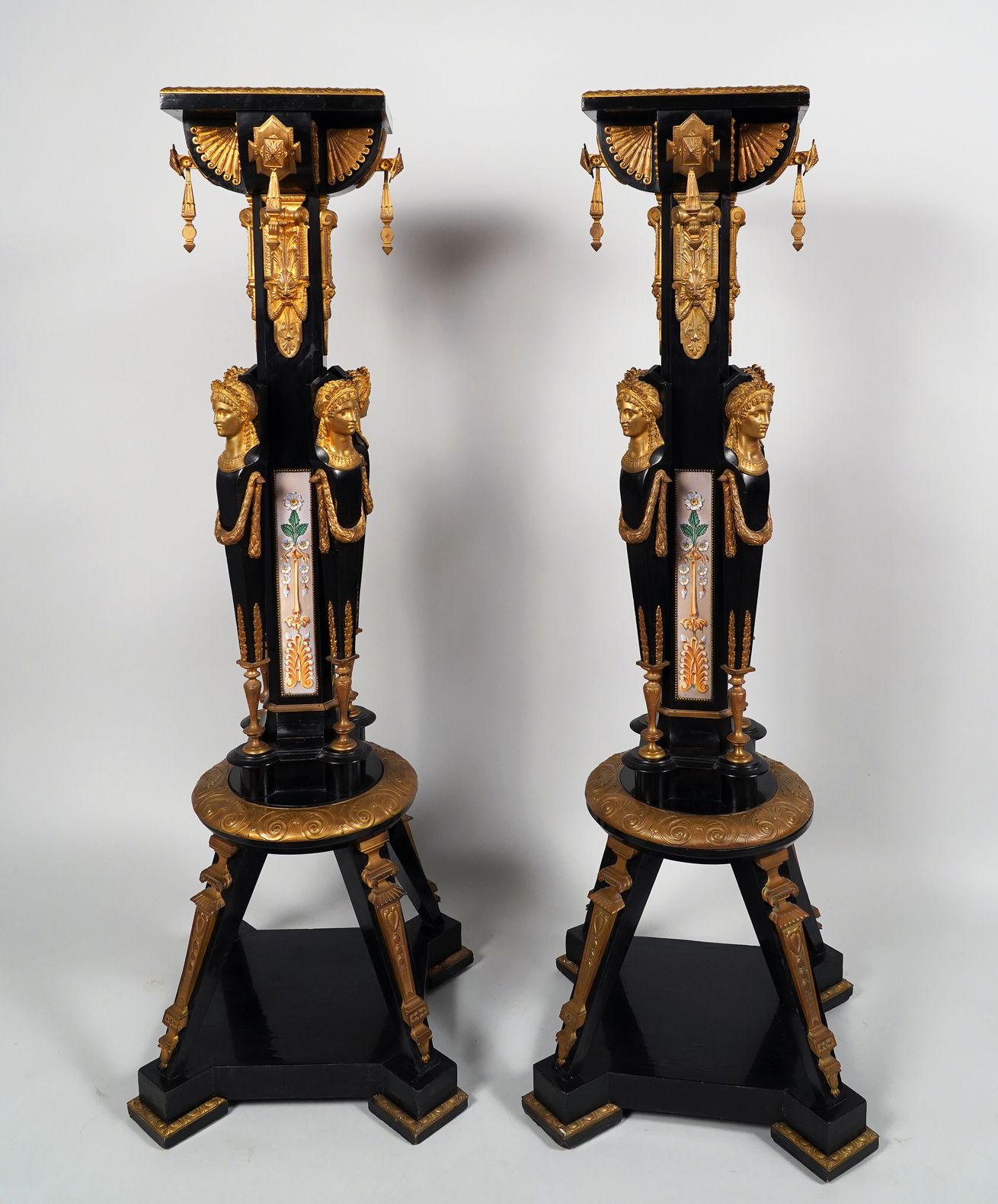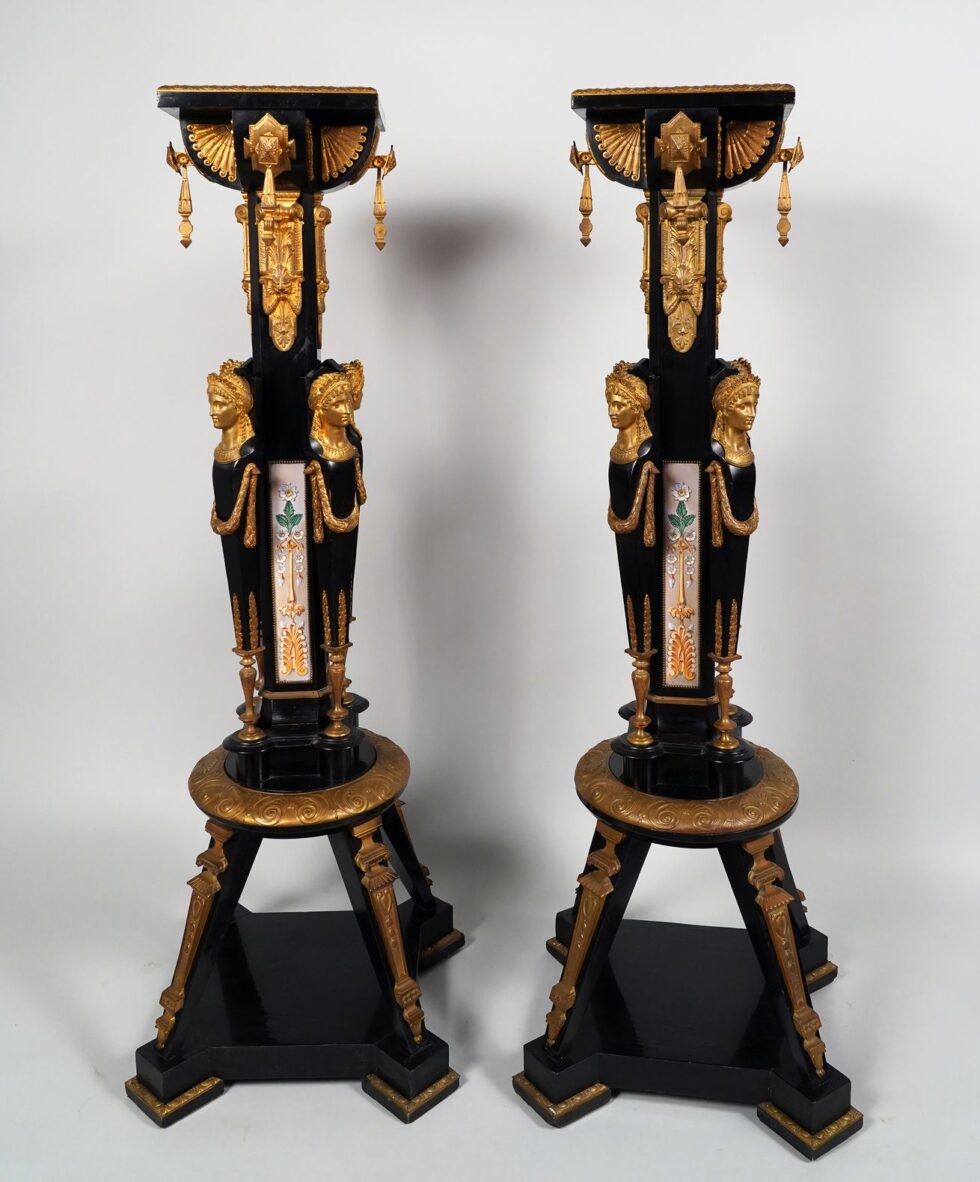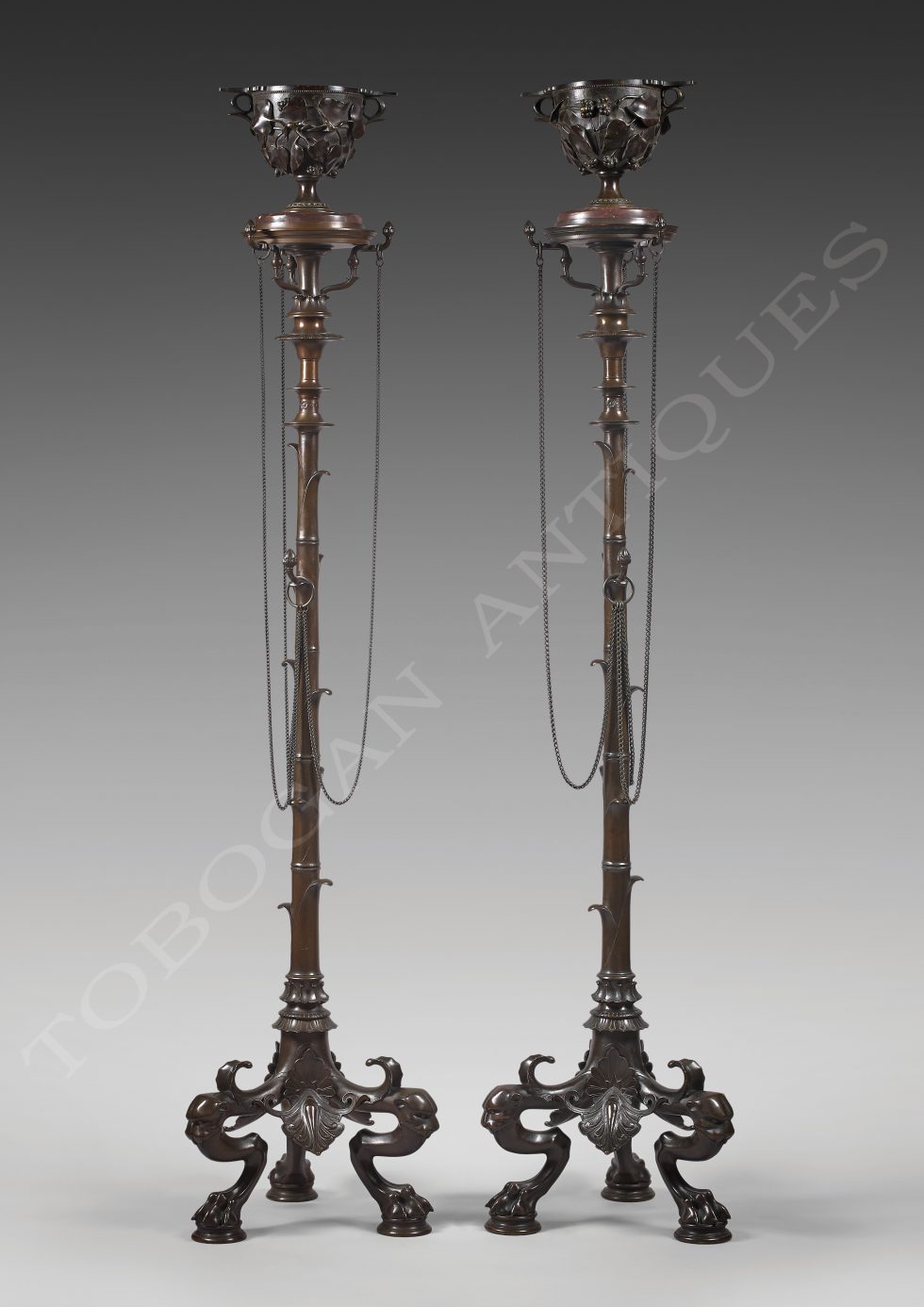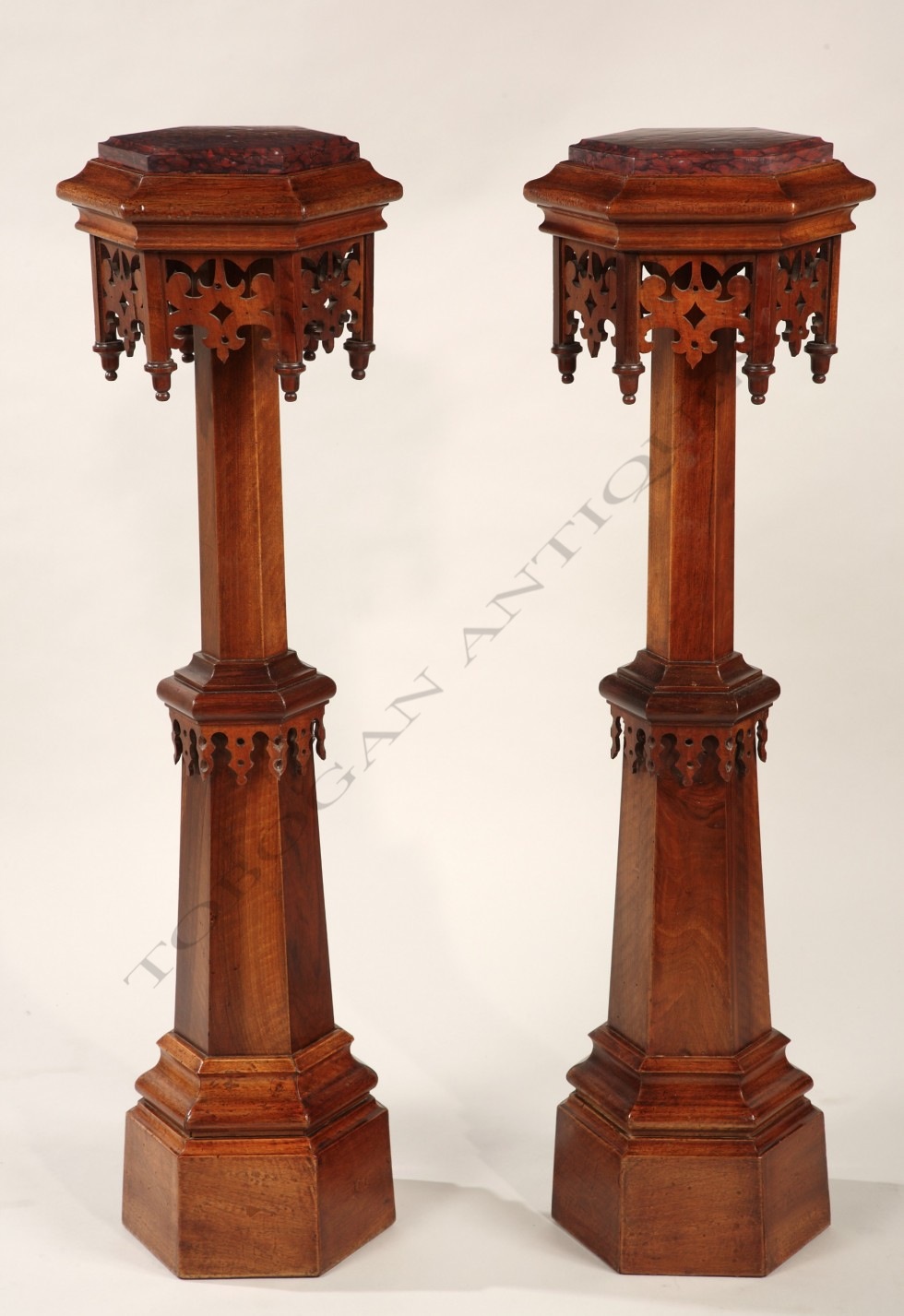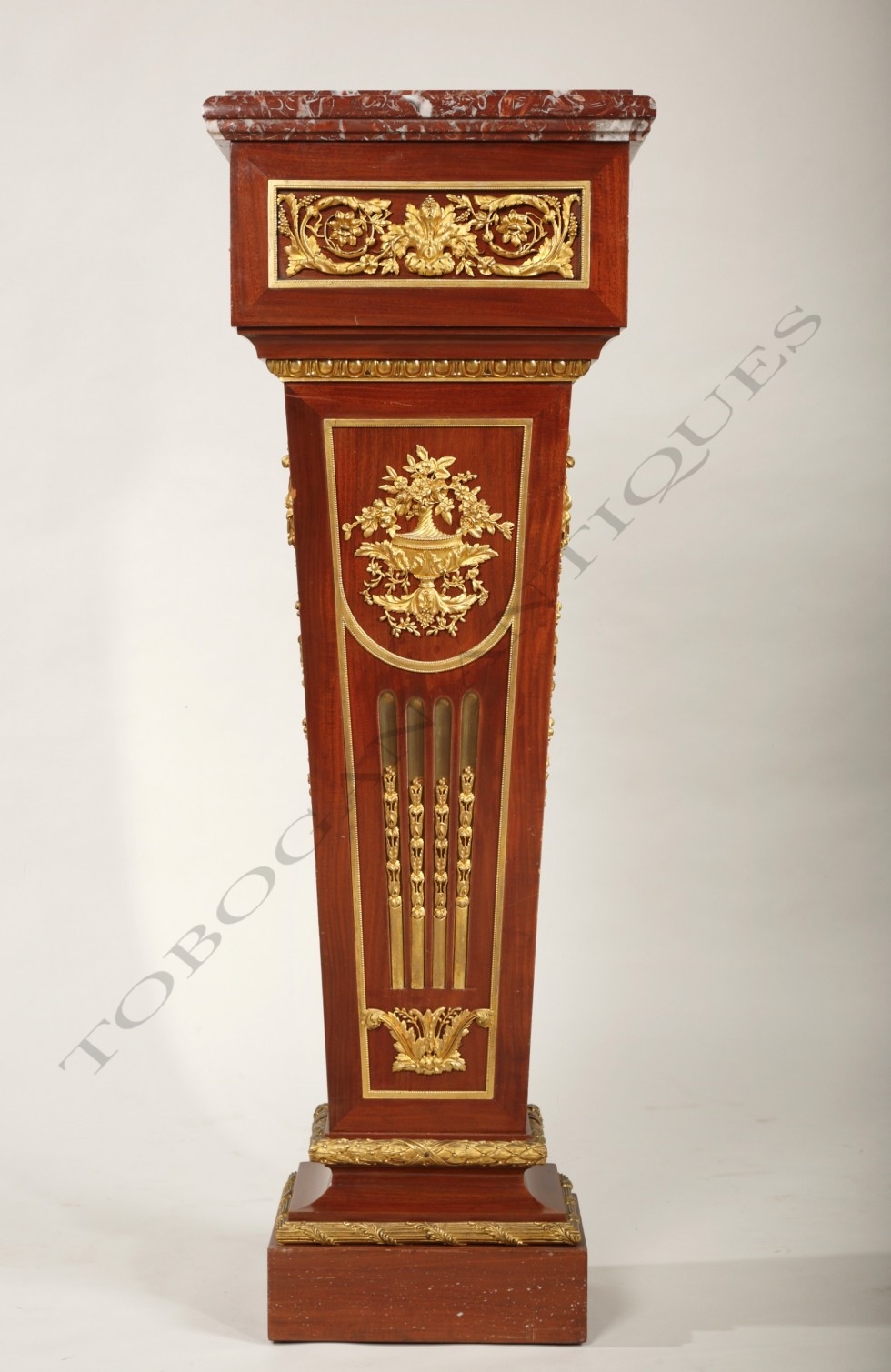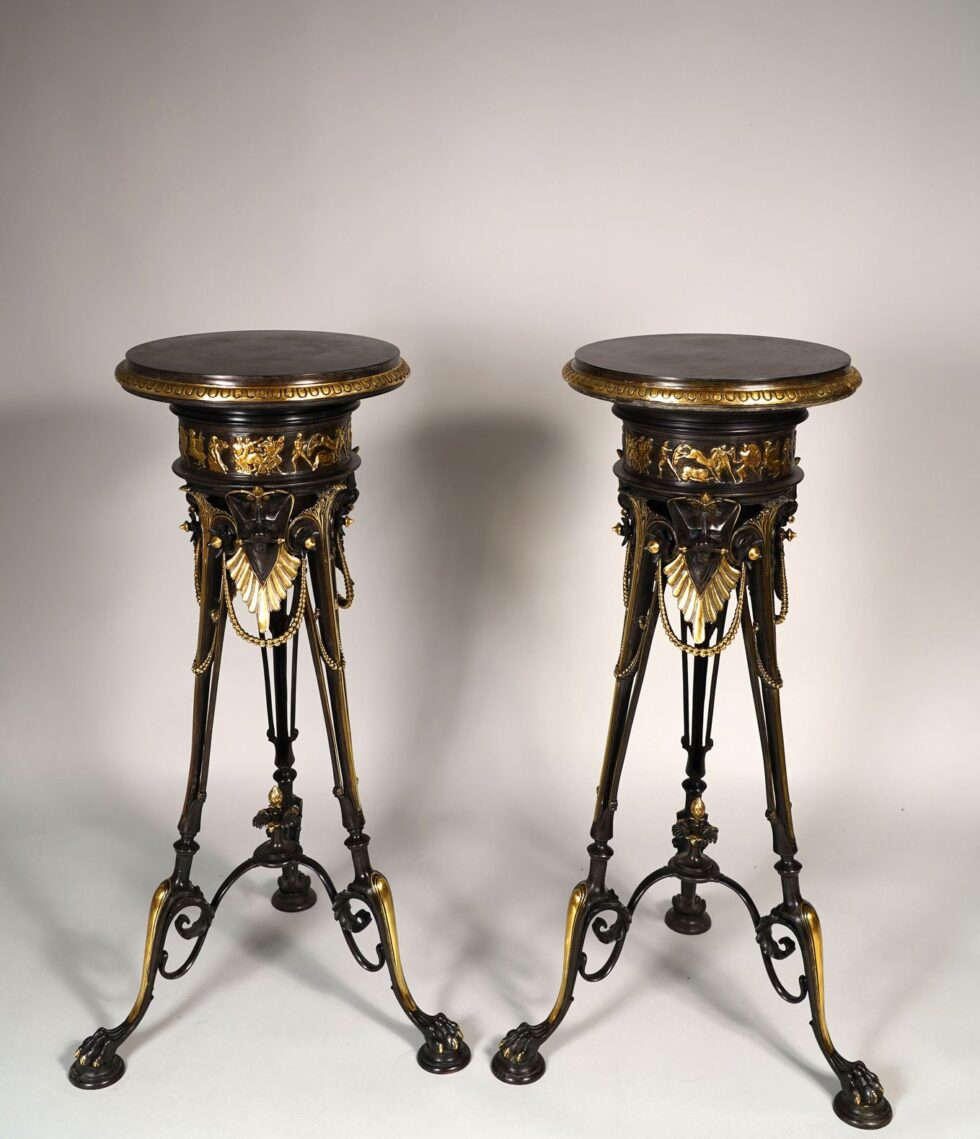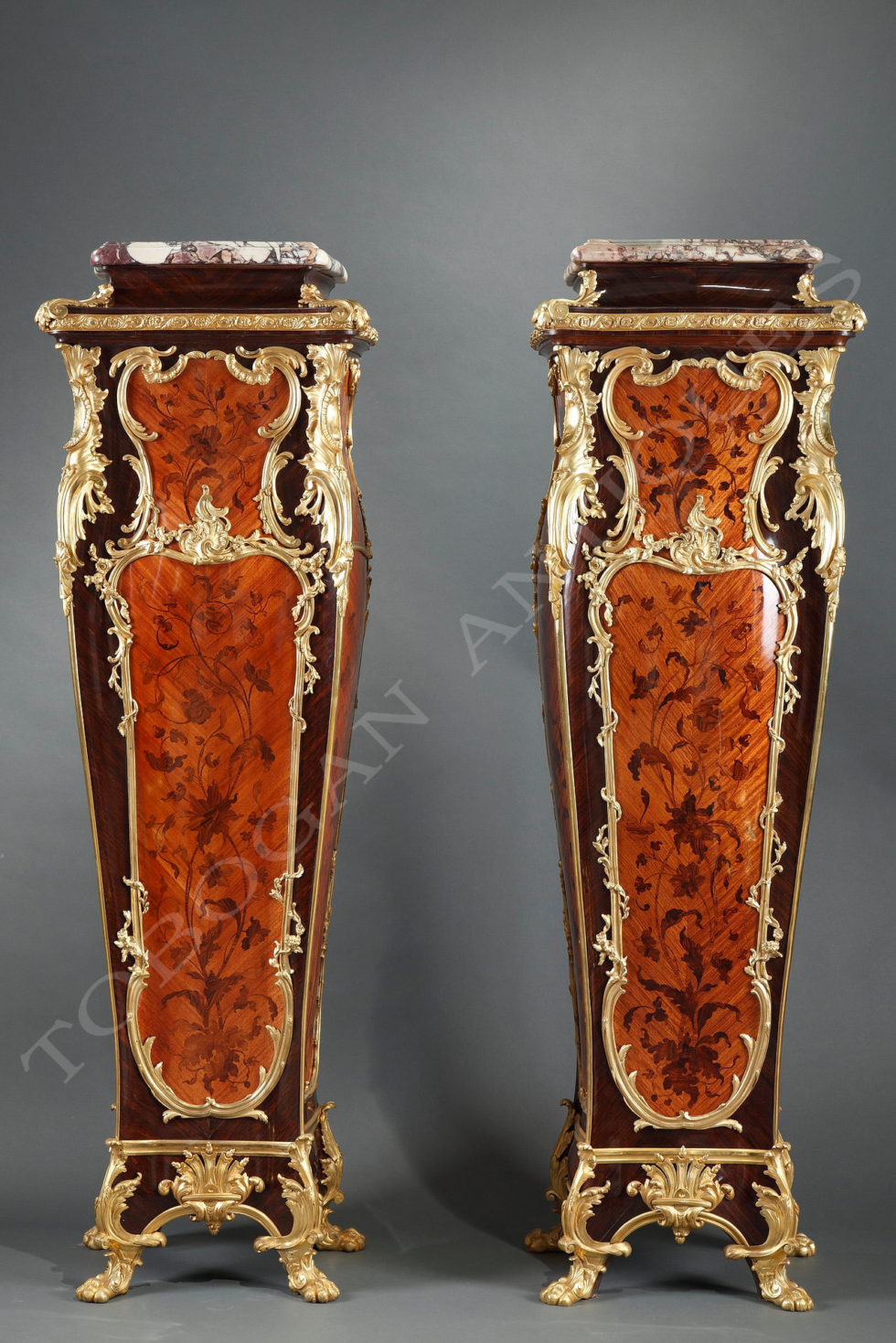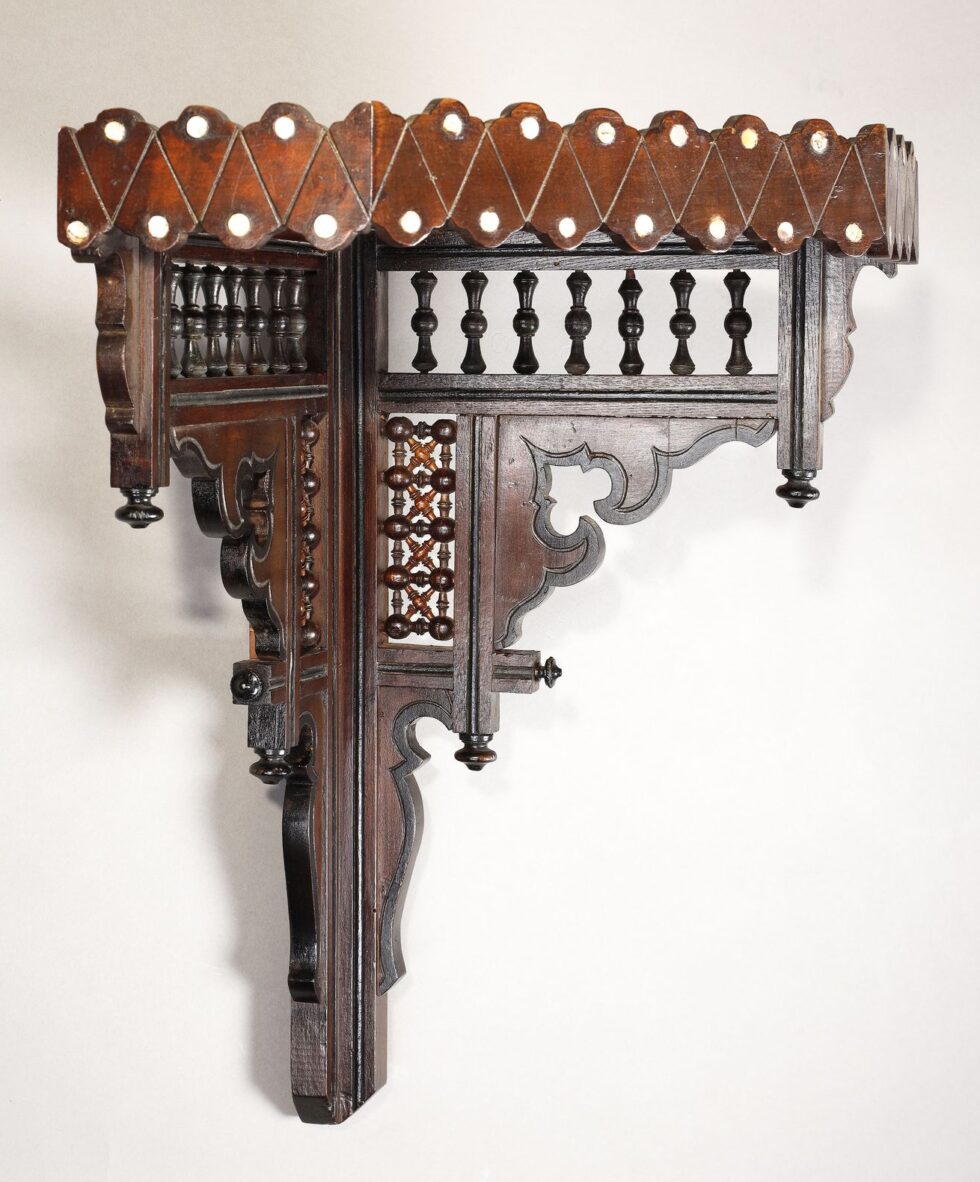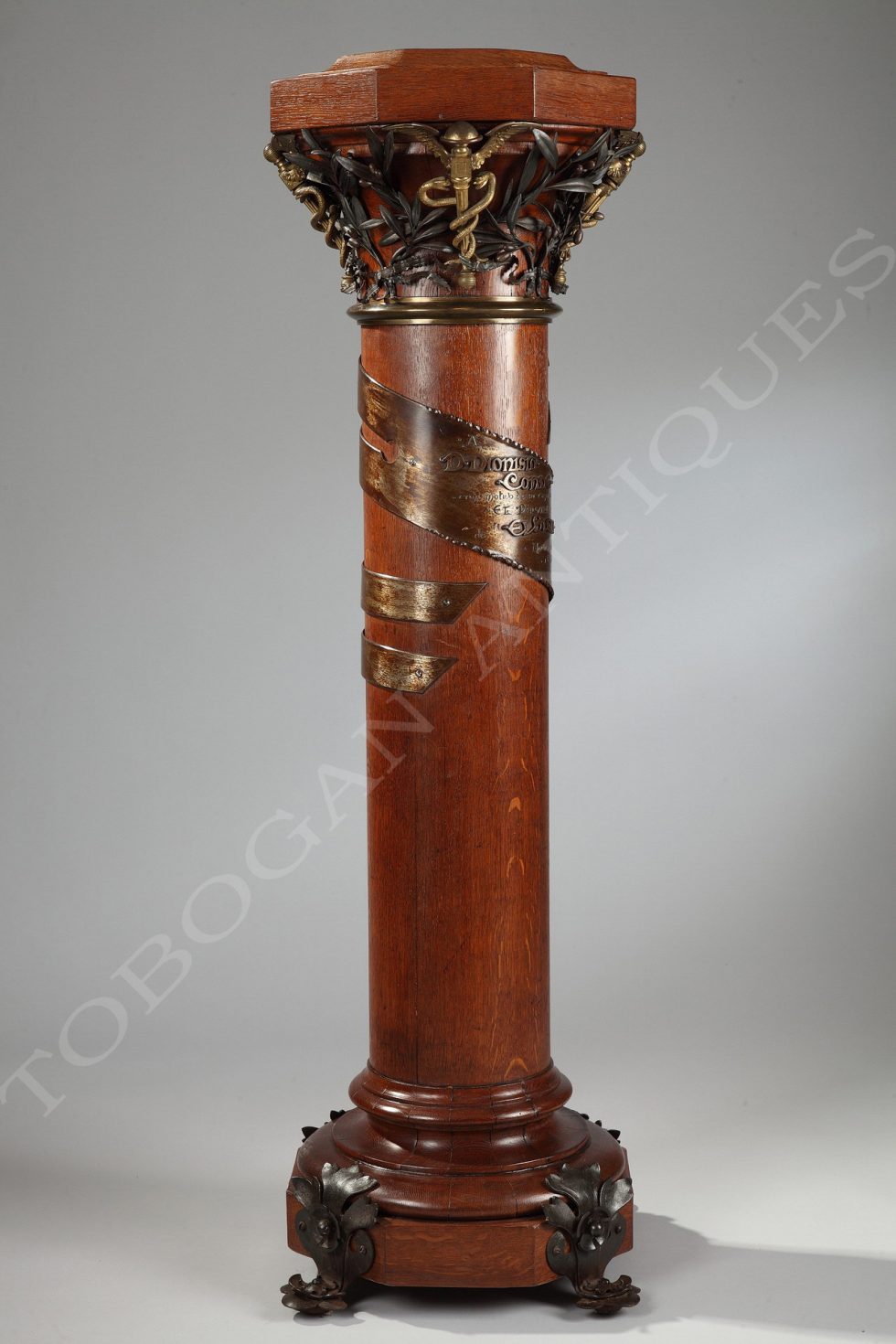Ref. 617/16 & 459/2
C.-G. Diehl
Cabinet-maker
(1811-1885)
J. Brandely
Ornemanist
(active from 1867 to 1873)
Pair of Neo-Greek Pedestals
France
Circa 1867
Blackened pearwood, Galvanic bronze, Glazed earthenware
Height : 141 cm (55,5 in.) ; Width : 49 x 49 cm (19,3 x 19,3 in.)
Exceptional pair of neo-Greek style pedestals, made in blackened pearwood, gilded galvanic bronze and glazed earthenware. The sheath-shaped shaft is decorated with rectangular plates in glazed earthenware with floral decoration and palmettes from the earthenware Manufacture Lebeuf, Milliet et Cie in Creil-Montereau framed by four female busts ending in a detached sheath. It is surmounted by motifs of palmettes, fans and feline heads in bronze supporting a square entablature framed by a frieze. The pedestals rest on a circular base decorated with a bronze frieze of palmettes, supported by four feet resting on a molded base adorned at the corners with friezes of oves.
related works
These ornaments are emblematic of the collaboration between the ornemanist J. Brandely and cabinet-maker C.-G. Diehl, and as found on a « table genre grec », a « bahut style grec » or even a « bijoutier de style grec », presented at the Universal Exhibition of 1867 in Paris, where they were commented by the art critic Jules Mesnard in his book : Les Merveilles de l’Exposition Universelle de 1867 : in particular concerning « les anneaux de l’entablement sont ciselés avec amour et l’on remarquera le dessin des pitons qui les portent ; il en est de même du rayonnement en éventail qui meuble la petite console de côté,… la tête d’un beau type grec, et d’une animation sereine, est coiffée d’une rangée de frisons sur le front. Le diadème est d’une finesse d’ornementation qui, si l’on pouvait le détacher, en ferait un véritable bijou » (tome II, p°133 & 149).
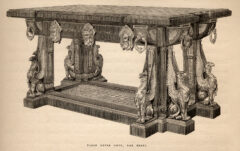
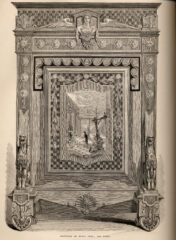
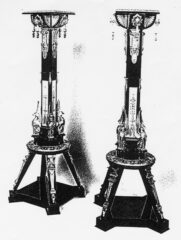
A pair of pedestals by C.G. Diehl and the Manufacture Lebeuf, Milliet & Cie similar to ours is listed in the Documentary Service of the Musée d’Orsay in Paris.
Biography
Arriving in Paris in about 1840, Charles-Guillaume Diehl (1811-1885) founded his cabinet making and decoration firm at 19 rue Michel-le-Comte in 1885. His workshops produced elegant little pieces of furniture in rosewood and thuja and novelties with bronze and porcelain embellishments (see « Les ébénistes du XIXème siècle », D. Ledoux-Lebard, Ed. de l’amateur, 1982, p.164). It was his luxury boxes, however (liqueur cellarettes, cigar cabinets, games boxes, cashmere cases, jewelry cases) which assured Diehl’s renown (see « l’Art en France sous le Second Empire », Exposition Grand-Palais, Paris, 1979, p.133). Already rewarded with a bronze medal at the Universal Exhibition of 1855 in Paris, he exhibited a jardinière with china columns and a liqueur cabinet at the Industrial Arts Exhibition in 1861.
In collaboration with the designer Jean Brandely (active from 1867 until 1873), Diehl renovated his decorative repertory and created astonishing pieces of furniture in the Grecian style which had a dazzling success at the Universal Exhibition in Paris in 1867, where his cabinets also won a silver medal. Certain motifs were so typical of Diehl’s work that they received extensive commentary by the art critic J. Mesnard in his book « Les Merveilles de l’Exposition Universal de 1867 » (vol. II, pp. 133 & 149). He writes of a table of which « the pendant bearing hooks and the fan shaped radiating motif which ornaments the entablature are engraved with love » (p. 133) and a jewelry case where « The head in fine Grecian style makes up the essential part of the fine gilt bronze ornementation » (p. 149).
For this Universal Exhibition Diehl also formed a partnership with two famous sculptors : Emile Guillemin (1841-1907) who carved the relief for a mahogany sideboard with galvanic gilt bronzes (Orsay Museum, Paris, Inv. O.A.O. 992) and Emmanuel Frémiet (1824-1910) who executed the low relief for a cedar medal cabinet with marquetry and silver plated bronzes (Orsay Museum, Paris, Inv. O.A. 10440). Diehl was again rewarded with a medal of honour at the Union Central Exhibition of 1869 and a progress medal at the Universal Exhibition in Vienna in 1873 (Sideboard in blackened pear wood and lemon wood with galvanic bronzes, designed by J. Brandely with a low relief by E. Guillemin, Orsay Museum, Paris, Inv. O.A.O. 336). Showered with praise by the critics, Diehl is considered as one of the most innovating artists of the 19th Century. His final appearance was at the 1878 Universal Exhibition in Paris where he presented outside the competition, his most recent creations, including a work table in marquetry which with its naturalistic grasshopper motif anticipated « Art Nouveau » (Musée de l’Ecole de Nancy, Nancy).
In order to compete with the English production, the Creil (Oise) and Montereau (Seine-et-Marne) manufactures began producing « English style » white paste earthenware as soon as the eighteenth century. At Montereau, English potters refugees in France shared their skills with Louis Leboeuf (1792-1854). Under the Second Empire, technical innovations, added to the enthusiasm of the middle classes in the decorative arts, provided a production of fine standard, more accomplished and more diverse. The white clay was then relayed by the opaque porcelain, then whiter, harder and tougher. With the merger of Manufactures of Montereau and Creil in 1840, Lebeuf went into partnership with Milliet (marks « Lebeuf Milliet and Co. » from 1840 to 1874, followed by « Lebeuf and Co. » from 1875 to 1876). Both partners were constantly seeking to discover new and various techniques and patterns of decoration. This golden age lasted until the early twentieth century as the economic crisis appeared. A restructuring process was started and Montereau was preferred to Creil. The takeover by the Choisy Manufacture in 1920 continued the mass production until 1955, when Montereau definitely closed down its workshops.
Contact us
Tobogan Newsletter
If you want to be up-to-date with our new acquirings you can sign up to our newsletter.

